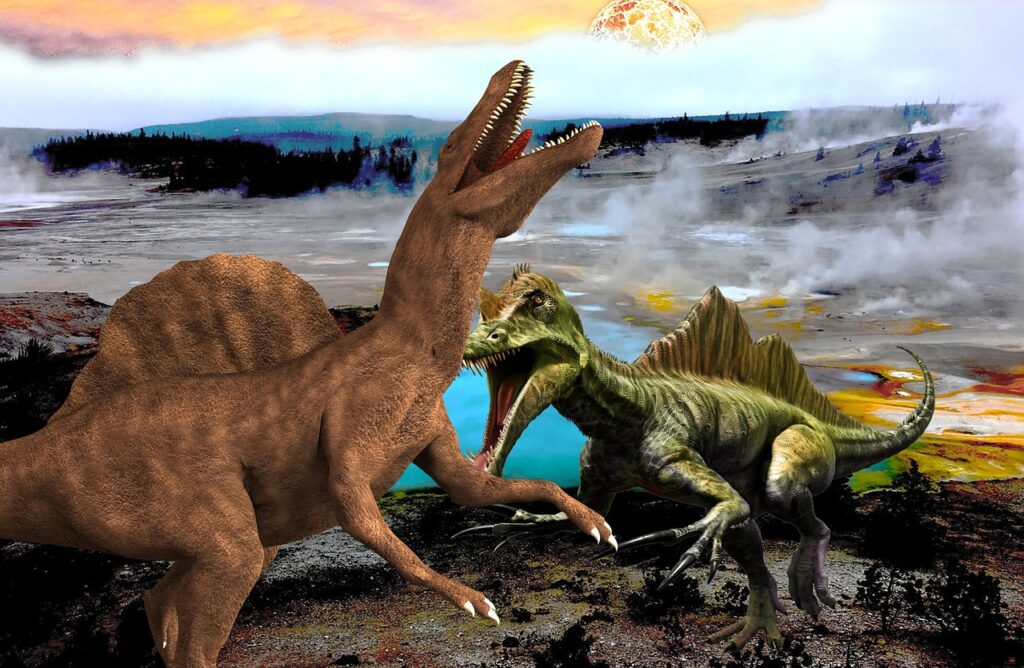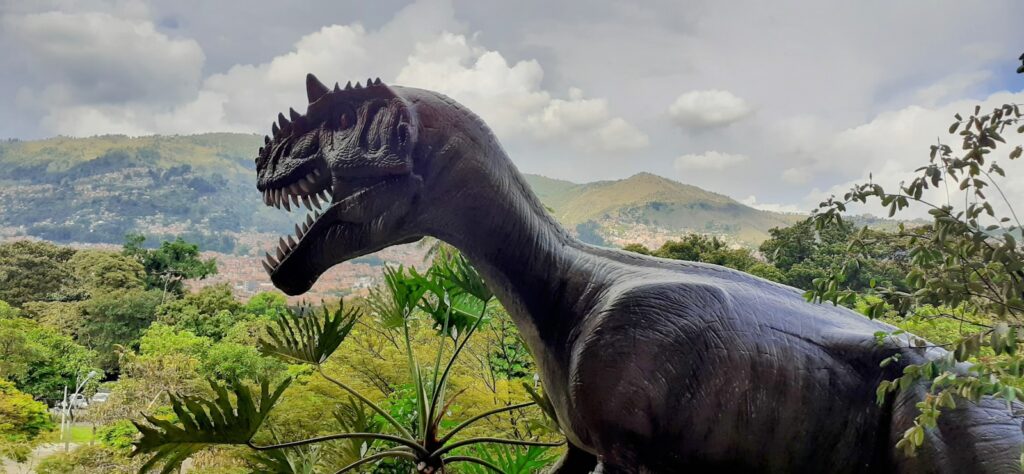Imagine standing in a prehistoric world where the ground trembles beneath your feet, volcanic ash darkens the sky, and massive asteroids streak across the heavens like harbingers of doom. For over 165 million years, dinosaurs ruled our planet, but their reign wasn’t a peaceful stroll through paradise. These magnificent creatures faced catastrophic events that would make today’s natural disasters seem like gentle summer storms.
The Great Dying: Earth’s Most Devastating Moment
Long before dinosaurs dominated the Earth, our planet experienced its most brutal massacre. The Permian-Triassic extinction event, aptly nicknamed “The Great Dying,” occurred around 252 million years ago and wiped out nearly 96% of all marine species and 70% of terrestrial vertebrates. This catastrophic event set the stage for dinosaur evolution, creating ecological niches that would eventually be filled by these remarkable reptiles.
The disaster lasted for thousands of years, triggered by massive volcanic eruptions in what is now Siberia. These eruptions released enormous amounts of carbon dioxide, methane, and toxic gases into the atmosphere, creating a runaway greenhouse effect. Ocean temperatures soared, acid rain fell from poisoned skies, and oxygen levels plummeted to dangerously low levels.
Interestingly, this global catastrophe became the dinosaurs’ golden ticket to success. The archosaurs, early relatives of dinosaurs, survived this extinction event and rapidly diversified to fill the empty ecological roles left by the victims. Within just a few million years, the first true dinosaurs appeared, ready to inherit a world recovering from its darkest hour.
Volcanic Nightmares: When Mountains Became Killers
Throughout the Mesozoic Era, dinosaurs faced numerous volcanic catastrophes that tested their survival skills. The Central Atlantic Magmatic Province eruptions around 201 million years ago created one of the largest volcanic events in Earth’s history, spanning across what would become North America, Europe, and Africa. These eruptions released massive amounts of lava, ash, and poisonous gases, triggering the end-Triassic extinction event.
Many dinosaur species couldn’t adapt quickly enough to the rapidly changing climate conditions. The ash clouds blocked sunlight for months, causing global cooling and disrupting photosynthesis. Plants died en masse, creating a domino effect that devastated herbivorous dinosaurs and, subsequently, the carnivores that hunted them.
However, some dinosaur lineages proved remarkably resilient. Smaller, more adaptable species survived by developing new feeding strategies and behavioral patterns. These survivors became the ancestors of the dinosaurs that would dominate the Jurassic and Cretaceous periods, proving that sometimes the meek truly do inherit the Earth.
Climate Chaos: Adapting to a Changing World
Dinosaurs lived through dramatic climate swings that would challenge any species’ survival instincts. During the Late Triassic and Early Jurassic periods, global temperatures fluctuated wildly, creating extreme weather patterns and unpredictable seasonal changes. Some regions experienced prolonged droughts while others faced devastating floods.
Many dinosaur species developed remarkable adaptations to cope with these climate challenges. Sauropods, for instance, evolved long necks that allowed them to reach high vegetation when ground-level plants became scarce during dry periods. Their massive size also helped them store energy reserves for lean times, much like modern elephants do during drought seasons.
Theropod dinosaurs showed incredible behavioral flexibility, with some species becoming more opportunistic feeders during climate crises. They learned to exploit new food sources, from fishing in newly formed lakes to scavenging carcasses left behind by climate-related die-offs. This adaptability became their key to survival.
The Asteroid Impact: Countdown to Extinction
The most famous dinosaur disaster story belongs to the catastrophic asteroid impact that occurred 66 million years ago. This mountain-sized space rock, measuring approximately 6 to 9 miles in diameter, slammed into Earth near what is now the Yucatan Peninsula in Mexico. The impact released energy equivalent to billions of atomic bombs, creating a crater over 100 miles wide and forever changing our planet’s history.
The immediate aftermath was nothing short of apocalyptic. The impact triggered massive earthquakes, volcanic eruptions, and tsunamis that ravaged coastlines worldwide. Debris from the impact was hurled into the atmosphere, creating a global firestorm that ignited forests across multiple continents. The sky literally burned as red-hot rock fragments rained down from space.
Within hours, a thick blanket of dust and debris enveloped the planet, plunging Earth into what scientists call an “impact winter.” Temperatures dropped dramatically, and sunlight couldn’t penetrate the dust clouds for months or possibly years. This darkness spelled doom for photosynthesis-dependent ecosystems and the dinosaurs that relied on them.
Survivors of the Apocalypse: Who Made It Through
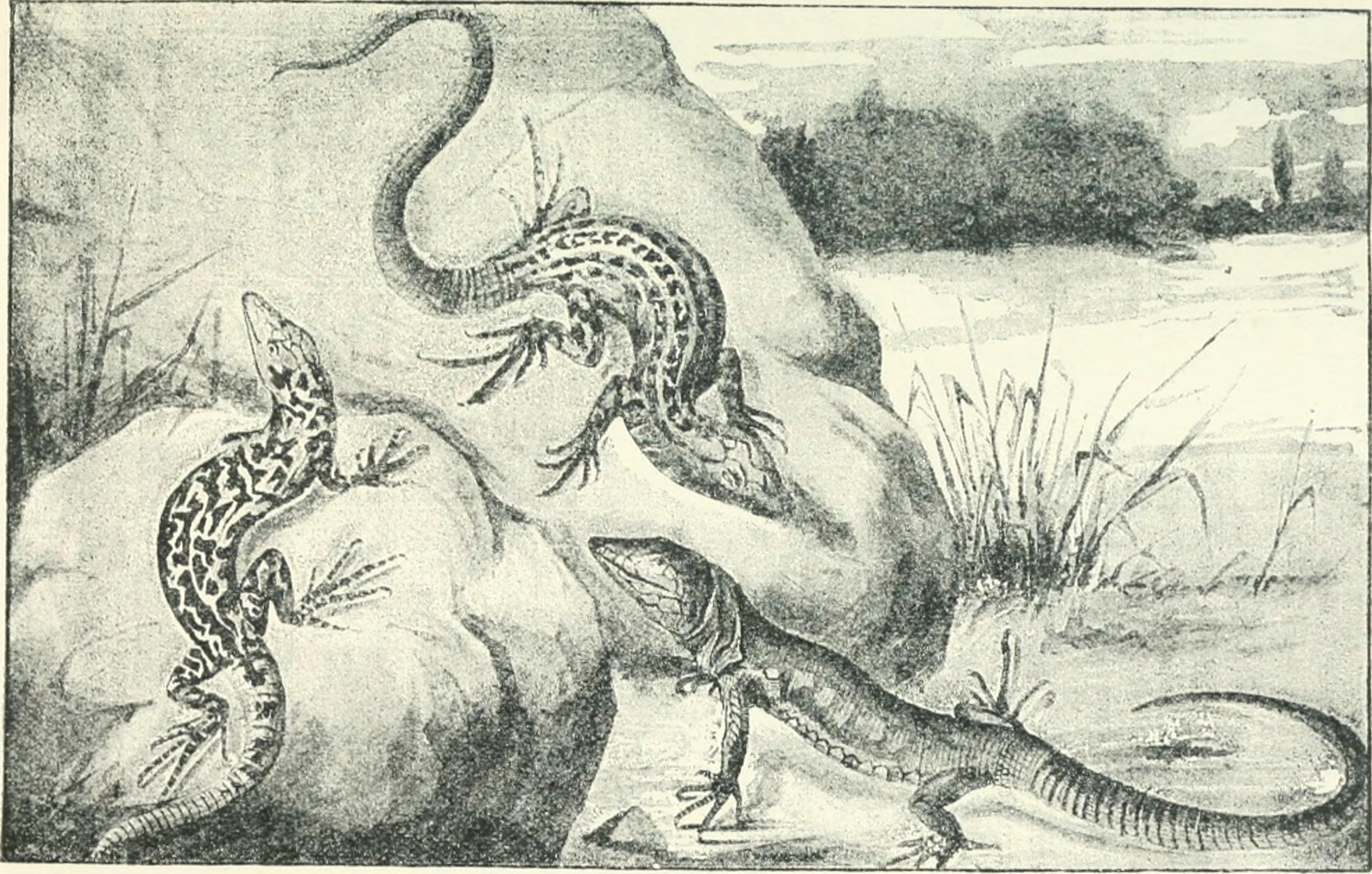
Not all dinosaurs perished in the great extinction event. Birds, which are direct descendants of theropod dinosaurs, survived the catastrophe and continue to thrive today. These feathered survivors possessed several advantages that helped them weather the storm, including their ability to fly to new food sources and their relatively small size, which required fewer resources.
Small mammals also survived the extinction event, likely by hiding in burrows and feeding on seeds, insects, and other resources that remained available even after the impact. These tiny creatures, no larger than modern shrews, would eventually diversify and evolve into the mammals that dominate today’s ecosystems.
Crocodilians, turtles, and some lizard species also made it through the extinction event. Their cold-blooded metabolism allowed them to survive on minimal food for extended periods, while their ability to remain dormant helped them wait out the worst conditions. These survivors remind us that sometimes it’s not the biggest or strongest that survive, but the most adaptable.
Marine Mayhem: Ocean Disasters and Dinosaur Responses
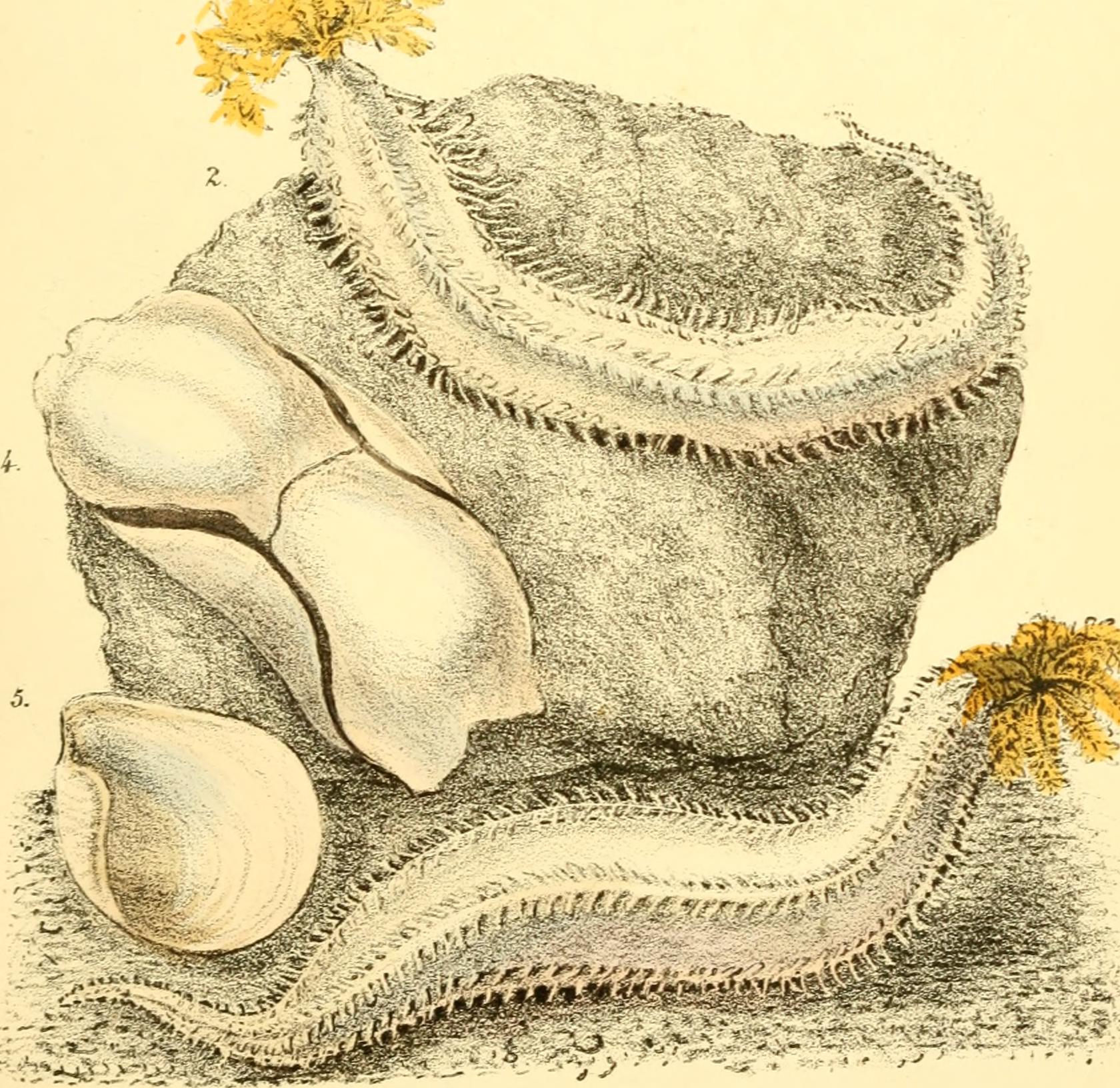
While most people think of dinosaurs as land animals, marine reptiles like plesiosaurs and mosasaurs ruled the ancient seas alongside their terrestrial cousins. These marine giants faced their own unique set of disasters, including massive ocean acidification events, sea level changes, and marine anoxic events where oxygen levels dropped to deadly lows.
During oceanic anoxic events, vast areas of the ocean became uninhabitable dead zones. Marine reptiles had to adapt quickly or face extinction. Some species developed more efficient respiratory systems, while others changed their migration patterns to avoid the worst-affected areas. The competition for remaining habitable waters became fierce.
Interestingly, some marine disasters actually benefited certain dinosaur populations. When sea levels rose dramatically, new shallow seas created ideal environments for fish and other marine life. This abundance of food sources attracted semi-aquatic dinosaurs like Spinosaurus, which evolved specialized features for fishing and swimming.
Forest Fires and Fiery Skies: Dealing with Infernos
Massive wildfires plagued the Mesozoic Era, often triggered by volcanic activity, lightning strikes, or asteroid impacts. These fires could rage for months, consuming millions of acres of forest and dramatically altering ecosystems. For dinosaurs, fire represented both a deadly threat and an unexpected opportunity.
Some dinosaur species developed behaviors to escape fires, such as migrating to rivers and lakes during fire seasons. Others learned to follow the fires, feeding on animals fleeing the flames or scavenging burned carcasses. Certain theropod dinosaurs became expert fire-followers, much like modern birds of prey that hunt at the edges of wildfires.
The aftermath of major fires often created new ecological opportunities. Fast-growing plants colonized burned areas, providing fresh food sources for herbivorous dinosaurs. These fire-adapted ecosystems supported different dinosaur communities than the original forests, demonstrating how disasters could drive evolutionary change and diversification.
Flood Survivors: When Waters Rose and Fell
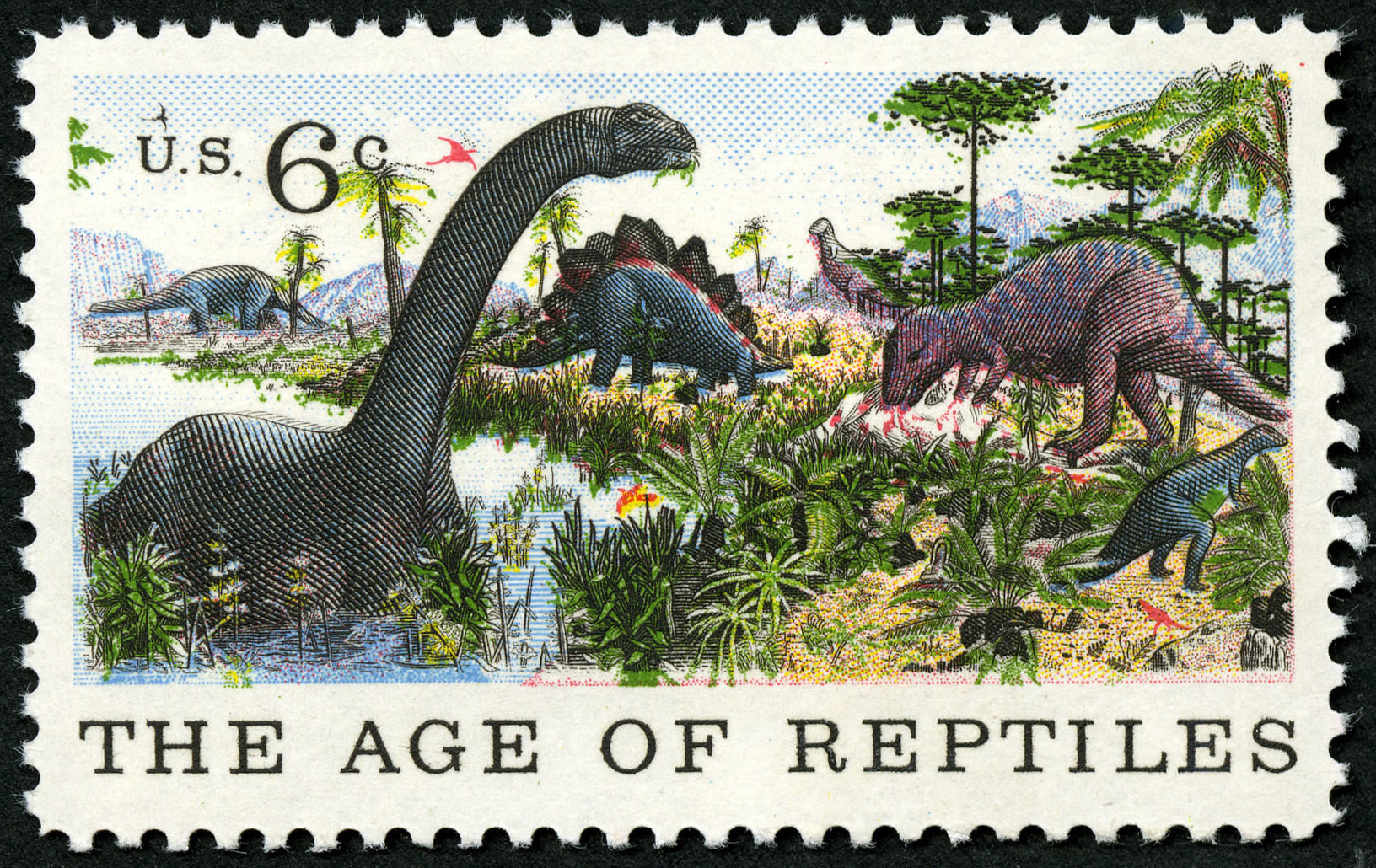
Sea level changes during the Mesozoic Era created dramatic flooding events that reshaped continents and displaced dinosaur populations. During the Cretaceous period, sea levels were significantly higher than today, creating vast inland seas that divided continents into island chains. These geographic changes forced dinosaurs to adapt to new environments or face extinction.
Some dinosaur species became excellent swimmers, developing paddle-like appendages and streamlined bodies to navigate flooded landscapes. Others took to the trees, evolving climbing abilities to escape rising waters. The famous duck-billed dinosaurs (hadrosaurs) thrived in these wetland environments, developing specialized feeding techniques for aquatic plants.
When waters receded, new land bridges appeared, allowing dinosaur populations to spread to previously isolated areas. These migrations led to rapid evolutionary changes as species encountered new environments and competitors. The constant cycle of flooding and land exposure created a dynamic world that kept dinosaur evolution in constant motion.
Ice Ages and Frozen Worlds: Coping with Cold
Although the Mesozoic Era was generally warm, dinosaurs still faced periods of cooling that challenged their survival. During the Late Triassic and Early Jurassic periods, brief ice ages created harsh conditions that tested dinosaur adaptability. These cooling events weren’t as severe as the ice ages that would later affect mammals, but they still posed significant challenges.
Some dinosaur species developed behavioral adaptations to cope with cooler temperatures, such as seasonal migration patterns and social huddling behaviors. Others evolved physiological changes, including improved insulation through feathers or specialized metabolism that helped them maintain body temperature in cooler conditions.
The polar regions during the Cretaceous period hosted diverse dinosaur communities despite experiencing months of darkness each year. These polar dinosaurs developed unique adaptations for extreme seasonal variations, including enhanced night vision and the ability to survive extended periods with limited food sources.
Disease and Pandemic Disasters: Silent Killers
Dinosaurs faced invisible enemies in the form of diseases and parasites that could devastate populations just as effectively as any asteroid impact. Fossil evidence suggests that various pathogens affected dinosaur communities, causing mass die-offs and population crashes. These biological disasters often left no dramatic geological signatures, making them harder to detect in the fossil record.
Some dinosaur species developed social behaviors that helped limit disease transmission, such as isolating sick individuals or abandoning infected areas. Others evolved stronger immune systems through natural selection, with populations that survived disease outbreaks passing on resistance genes to their offspring.
Interestingly, some diseases may have driven evolutionary innovations. The pressure to survive pathogenic attacks could have led to the development of new defensive behaviors, improved hygiene practices, or even cooperative care for sick individuals. These adaptations helped build more resilient dinosaur communities.
Drought and Famine: When Resources Vanished
Extended drought periods created severe challenges for dinosaur communities, particularly for the massive herbivores that required enormous amounts of vegetation daily. During these dry spells, water sources became scarce, and plant life withered across vast regions. Competition for remaining resources intensified, leading to dramatic changes in dinosaur behavior and distribution.
Large sauropods developed remarkable survival strategies during drought conditions. Their ability to travel long distances allowed them to follow seasonal water sources, while their efficient digestive systems helped them extract maximum nutrition from poor-quality vegetation. Some species may have entered states of reduced activity, similar to modern-day estivation, to conserve energy during the worst conditions.
Carnivorous dinosaurs faced their own drought-related challenges as prey animals died off or migrated away. Some theropods became more opportunistic, learning to exploit new food sources like fish from shrinking lakes or eggs from desperate herbivores. These behavioral adaptations often led to evolutionary changes that persisted long after the droughts ended.
Earthquakes and Geological Upheaval: Living on Shaky Ground
The constantly shifting continents of the Mesozoic Era subjected dinosaurs to frequent earthquakes and geological upheavals. As supercontinents broke apart and new mountain ranges formed, dinosaur populations faced habitat destruction and fragmentation on a massive scale. These geological forces created both barriers and opportunities for dinosaur evolution.
Some dinosaur species developed remarkable abilities to detect seismic activity, possibly using ground vibrations to sense approaching earthquakes or volcanic eruptions. This early warning system helped them evacuate dangerous areas before disaster struck. Modern elephants display similar abilities, suggesting this trait may have deep evolutionary roots.
The formation of new mountain ranges and valleys created isolated populations that evolved independently, leading to rapid speciation events. These geological disasters inadvertently became engines of evolution, creating the incredible diversity of dinosaur species we see in the fossil record.
Poisonous Atmospheres: Breathing Toxic Air
Various global disasters created toxic atmospheric conditions that challenged dinosaur respiratory systems. Massive volcanic eruptions released sulfur dioxide, carbon monoxide, and other poisonous gases into the atmosphere. These toxic clouds could persist for months or years, creating dead zones where normal breathing became impossible.
Some dinosaur species evolved more efficient respiratory systems to cope with reduced oxygen levels and toxic air. Birds, for example, developed their unique unidirectional airflow system partly as an adaptation to challenging atmospheric conditions. This respiratory innovation may have given them a crucial advantage during the end-Cretaceous extinction event.
Behavioral adaptations also helped dinosaurs survive toxic atmospheres. Some species learned to retreat to higher elevations where air quality was better, while others developed the ability to hold their breath for extended periods. These survival strategies demonstrate the remarkable flexibility of dinosaur physiology and behavior.
The Final Countdown: Lessons from the Last Dinosaurs
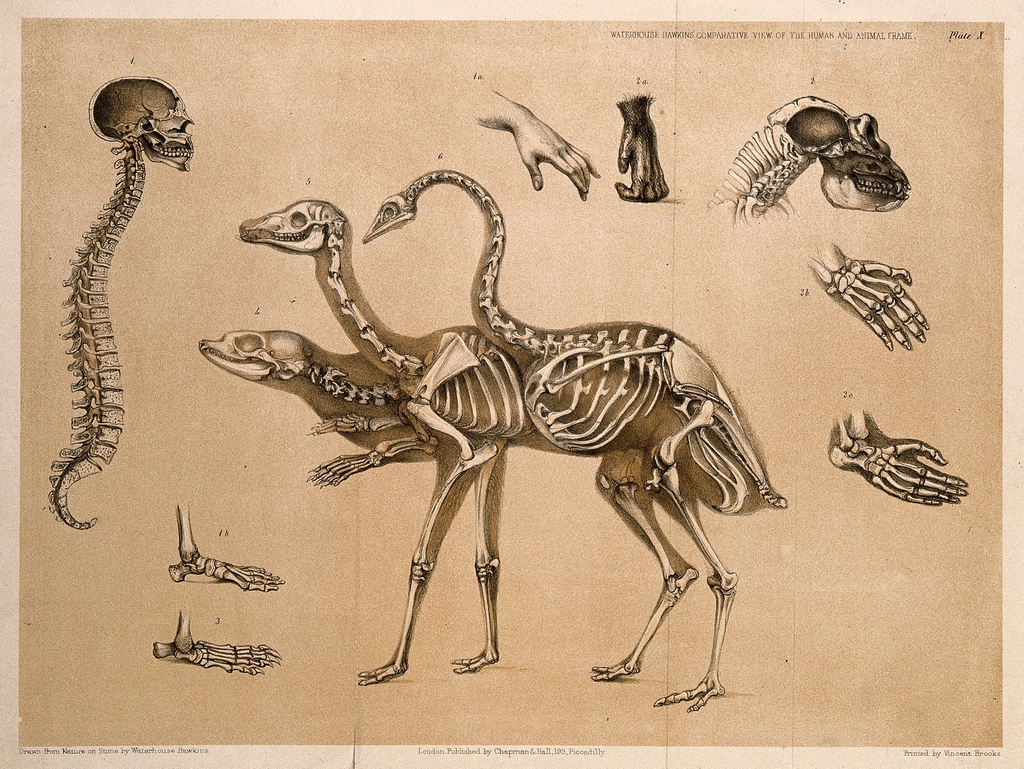
The final days of the non-avian dinosaurs offer profound insights into how species respond to ultimate catastrophic challenges. Evidence suggests that dinosaur diversity was already declining before the asteroid impact, possibly due to climate change, volcanic activity, and other environmental stressors. This gradual weakening may have made them more vulnerable to the final blow.
However, the story of dinosaur extinction isn’t simply one of failure and defeat. Many dinosaur lineages successfully adapted to changing conditions for millions of years before finally succumbing to the ultimate disaster. Their evolutionary innovations, from feathers to complex social behaviors, continue to influence life on Earth through their bird descendants.
The dinosaurs’ response to global disasters teaches us valuable lessons about resilience, adaptation, and the interconnectedness of life on Earth. Their 165-million-year reign demonstrates that even the most successful species must constantly evolve and adapt to survive in our planet’s dynamic environment. What strategies might today’s species need to develop to face our current global challenges?

